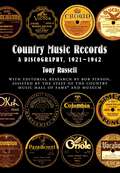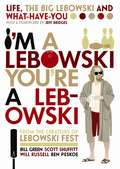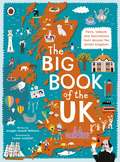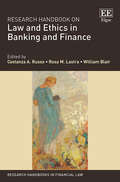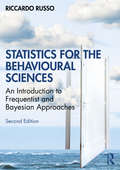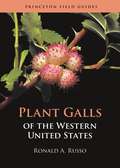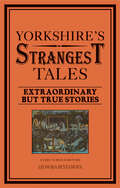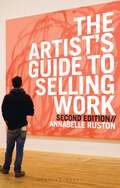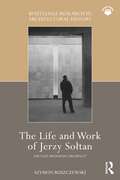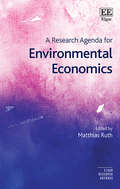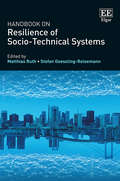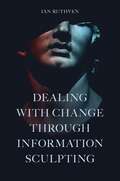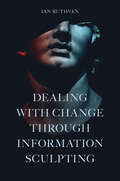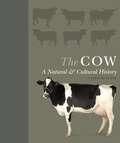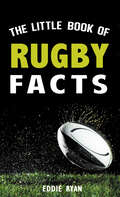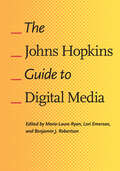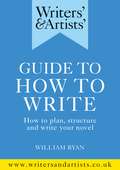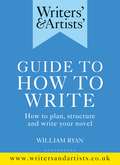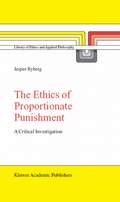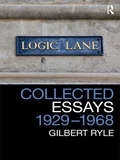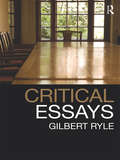- Table View
- List View
Country Music Records: A Discography, 1921-1942
by Tony Russell Bob PinsonMore than twenty years in the making, Country Music Records documents all country music recording sessions from 1921 through 1942. With primary research based on files and session logs from record companies, interviews with surviving musicians, as well as the 200,000 recordings archived at the Country Music Hall of Fame and Museum's Frist Library and Archives, this notable work is the first compendium to accurately report the key details behind all the recording sessions of country music during the pre-World War II era. This discography documents--in alphabetical order by artist--every commercial country music recording, including unreleased sides, and indicates, as completely as possible, the musicians playing at every session, as well as instrumentation. This massive undertaking encompasses 2,500 artists, 5,000 session musicians, and 10,000 songs. Summary histories of each key record company are also provided, along with a bibliography. The discography includes indexes to all song titles and musicians listed.
I'm A Lebowski, You're A Lebowski: Life, The Big Lebowski And What-have-you
by Will Russell Scott ShuffittIn 1998, the Coen Brothers followed the global success of their smash hit Fargo with a rambling tale of lies, corruption and bowling in early 90s LA - The Big Lebowski. It flopped at the box office. But in the years that followed, the movie took on a life of its own, spawning a culture of quotable lines, White Russians and even Lebowski Fest, an annual event attracting thousands of Big Lebowski die-hards. In I'm a Lebowski, You're a Lebowski ('That's terrific') the curators of Lebowski Fest offer the complete guide to one of the few true cult movies of the last twenty years, with photographs, real locations and interviews with the stars of the film, including John Turturro, John Goodman and Julianne Moore - and a foreword by the Dude himself, Jeff Bridges. The book also contains a glossary, trivia questions and the ultimate soundtrack listing - in other words, the whole Lebowski.
The Big Book of the UK: Facts, folklore and fascinations from around the United Kingdom
by Imogen Russell WilliamsWelcome...Fáilte...Croeso...Fair faa ye...to the United Kingdom!The Big Book of the UK introduces readers to customs and culture of the United Kingdom. Learn about the sport of "dwile flonking" and find out where black diamonds come from. Meet the supernatural animal that haunts the Scottish Highlands and discover the British sweets that helped Hillary and Tenzing scale Everest.Filled with facts about wildlife, food, sports, geography, language and some very silly place names, this book will help you uncover national secrets and unearth local legends from England, Wales, Scotland and Northern Ireland.
Research Handbook on Law and Ethics in Banking and Finance (Research Handbooks in Financial Law series)
by Costanza A. Russo Rosa M. Lastra William BlairThe global financial crisis highlighted the corrosive effects of unethical behaviour within the banking industry. This edited collection focuses on the role that ethics, as well as the law, can play to prevent such behaviour from reoccurring. It also examines the effectiveness of newly introduced regulations and supervisory actions in fostering ethical conduct with the aim of realigning the interests of financiers with those of society as a whole. Featuring contributions from authors in academia, central banks, and professional practice, this Research Handbook presents a comprehensive assessment of law, regulation and professional and market standards in the financial industry. The chapters discuss the philosophical foundations of ethics in financial law, the existence of a social licence to operate and how to nudge banks to be more inclusive. They also critically evaluate some of the key topics in the debate, including fiduciary duties and enforcement measures. The Research Handbook will be of great interest to academics, policy makers and practitioners in financial law and banking law, as well as legal ethics. Those working within the financial industry with an interest in corporate conduct and culture, will find the Handbook to be an invaluable source of information.
Statistics for the Behavioural Sciences: An Introduction to Frequentist and Bayesian Approaches
by Riccardo RussoThis accessible textbook is for those without a mathematical background (just some notions of basic algebra are sufficient) and provides a comprehensive introduction to all topics covered in introductory behavioural science statistics courses. It includes plenty of real examples to demonstrate approaches in depth based on real psychology experiments utilizing the statistical techniques described. New content in this thoroughly updated second edition includes an introduction to Bayesian statistics which complements the coverage of Classical/Frequentist statistics present in the first edition. It also offers practical details on how to perform analyses using JASP – a globally employed, freely downloadable statistical package. The updated eResources also feature a range of new material including additional exercises so readers can test themselves on what they have learned in the book. This timely and highly readable text will be invaluable to undergraduate students of psychology and research methods courses in related disciplines, as well as anyone with an interest in understanding and applying the basic concepts and inferential techniques associated with statistics in the behavioural sciences.
Statistics for the Behavioural Sciences: An Introduction to Frequentist and Bayesian Approaches
by Riccardo RussoThis accessible textbook is for those without a mathematical background (just some notions of basic algebra are sufficient) and provides a comprehensive introduction to all topics covered in introductory behavioural science statistics courses. It includes plenty of real examples to demonstrate approaches in depth based on real psychology experiments utilizing the statistical techniques described. New content in this thoroughly updated second edition includes an introduction to Bayesian statistics which complements the coverage of Classical/Frequentist statistics present in the first edition. It also offers practical details on how to perform analyses using JASP – a globally employed, freely downloadable statistical package. The updated eResources also feature a range of new material including additional exercises so readers can test themselves on what they have learned in the book. This timely and highly readable text will be invaluable to undergraduate students of psychology and research methods courses in related disciplines, as well as anyone with an interest in understanding and applying the basic concepts and inferential techniques associated with statistics in the behavioural sciences.
Plant Galls of the Western United States (Princeton Field Guides #149)
by Ronald A. RussoA photographic guide to 536 species of plant galls found west of the RockiesBeautiful and bizarre, plant galls are growths of various shapes, sizes, and colors produced in response to invading organisms. Describing 536 species of galls and their causative agents, Plant Galls of the Western United States explores this unique realm with stunning photos and fascinating information about the life cycles of the organisms involved.Often species-specific, plant galls can be shaped like stars, baskets, clubs, wigs, bowls, and cups, with colors and combinations that stagger the imagination. This richly illustrated field guide examines how galls develop, and their uses, seasonal appearance and growth rate, predators, and defense mechanisms. The “architects” of galls—bacteria, fungi, mites, moths, beetles, flies, midges, and wasps—are explored in depth, and descriptions are paired with illustrations of these gall-inducing organisms and their typical galls. Gall accounts are divided into those that occur on trees, shrubs, and miscellaneous hosts, including native and ornamental plants. The guide contains a useful glossary and a bibliography.Features 536 gall species—including 120 new to science and 232 that have never appeared in a field guide beforeExamines for the first time more than 90 species from southwestern oak treesContains more than 150 species from most of the deserts of the western states
Plant Galls of the Western United States (Princeton Field Guides #149)
by Ronald A. RussoA photographic guide to 536 species of plant galls found west of the RockiesBeautiful and bizarre, plant galls are growths of various shapes, sizes, and colors produced in response to invading organisms. Describing 536 species of galls and their causative agents, Plant Galls of the Western United States explores this unique realm with stunning photos and fascinating information about the life cycles of the organisms involved.Often species-specific, plant galls can be shaped like stars, baskets, clubs, wigs, bowls, and cups, with colors and combinations that stagger the imagination. This richly illustrated field guide examines how galls develop, and their uses, seasonal appearance and growth rate, predators, and defense mechanisms. The “architects” of galls—bacteria, fungi, mites, moths, beetles, flies, midges, and wasps—are explored in depth, and descriptions are paired with illustrations of these gall-inducing organisms and their typical galls. Gall accounts are divided into those that occur on trees, shrubs, and miscellaneous hosts, including native and ornamental plants. The guide contains a useful glossary and a bibliography.Features 536 gall species—including 120 new to science and 232 that have never appeared in a field guide beforeExamines for the first time more than 90 species from southwestern oak treesContains more than 150 species from most of the deserts of the western states
Yorkshire's Strangest Tales: Extraordinary But True Stories (Strangest Ser.)
by Leonora RustamovaWelcome to the weird and wonderful world of Yorkshire, or as it is sometimes beautifully referred to, God’s Own County. Though this isn’t the usual side of the county the tourists, travellers and residents see. This is the real Yorkshire, the strange and twisted nooks and crannies of the county’s bizarre history – past, present and future. Following on from the bestselling Strangest Series now comes an eBook devoted to one of England’s most beautiful valley regions. Located in the upper body of Britain’s old man, Yorkshire is a county with more strangeness than you can shake a Dale walking stick at. Home of Robin Hood (he was born in Barnsdale), Guy Fawkes, Dick Turpin and Dracula (Bram Stoker wrote part of the vampire tale in a Whitby hotel!) and, some say, the birthplace of modern civilization even began in Leeds! But you’ll have to read the book to find out why. Yorkshire’s Strangest Tales is a treasure trove of the hilarious, the odd and the baffling – an alternative travel guide to some of the county’s best-kept secrets. Read on, if you dare! You have been warned.
The Artist's Guide to Selling Work
by Annabelle RustonThis best-selling guide provides all the advice artists and craftspeople need to sell their work in today's competitive market. This fantastic new edition has been updated with essential advice on how to make full use of digital opportunities for selling your work, such as social networking and e-marketing. It contains information and suggestions about:Selecting and approaching galleries Pricing and paymentsRoyalty rates and financial managementSample contracts and other legal considerationsCreating a website and maximising hitsMastering social media to increase your visibilityManaging sales via online stores such as Etsy, Folksy or ebayPrinting your own reproductions and marketing themWith a foreword by Mary Ann Rogers, one of Britain's most acclaimed watercolour painters and awarded 'Best Selling Published Artist' by the Fine Art Trade Guild in 2009.
The Life and Work of Jerzy Sołtan: the “last modernist architect” (Routledge Research in Architectural History)
by Szymon RuszczewskiThis book is the first comprehensive monograph on Polish modern architect Jerzy Sołtan’s work including his designs, theory, and teachings in Poland and America based on extensive archival research and oral history interviews with former students. The Life and Work of Jerzy Sołtan takes the reader on a journey to both sides of the iron curtain, the communist Poland and the capitalist United States, contributing to the existing scholarship on modernism in post-socialist counties, on CIAM, and on Team 10. It pictures Sołtan as a central player in the history of modernism, building on his own contribution and on close relationships with Le Corbusier and Team 10. This book illustrates not only Sołtan’s work but also his life and how it influenced twentieth-century architecture. Looking in detail at his designs and texts enables the reader to discover how modern architecture tendencies can fit into a larger geopolitical context and how designs can be true manifestos to an architect’s theory. The reader will be immersed in a series of different contexts – from communist Poland, the vibrant academic atmosphere at Harvard to lively discussions on the future of modern architecture. This publication will be of particular interest for those studying modern architecture in Central Europe and in post-socialist countries, in particular Poland. Architects, designers, architectural and design students, and modern architecture enthusiasts will find this publication on the “last modernist” architect revealing new perspectives thanks to the unpublished and unresearched sources.
The Life and Work of Jerzy Sołtan: the “last modernist architect” (Routledge Research in Architectural History)
by Szymon RuszczewskiThis book is the first comprehensive monograph on Polish modern architect Jerzy Sołtan’s work including his designs, theory, and teachings in Poland and America based on extensive archival research and oral history interviews with former students. The Life and Work of Jerzy Sołtan takes the reader on a journey to both sides of the iron curtain, the communist Poland and the capitalist United States, contributing to the existing scholarship on modernism in post-socialist counties, on CIAM, and on Team 10. It pictures Sołtan as a central player in the history of modernism, building on his own contribution and on close relationships with Le Corbusier and Team 10. This book illustrates not only Sołtan’s work but also his life and how it influenced twentieth-century architecture. Looking in detail at his designs and texts enables the reader to discover how modern architecture tendencies can fit into a larger geopolitical context and how designs can be true manifestos to an architect’s theory. The reader will be immersed in a series of different contexts – from communist Poland, the vibrant academic atmosphere at Harvard to lively discussions on the future of modern architecture. This publication will be of particular interest for those studying modern architecture in Central Europe and in post-socialist countries, in particular Poland. Architects, designers, architectural and design students, and modern architecture enthusiasts will find this publication on the “last modernist” architect revealing new perspectives thanks to the unpublished and unresearched sources.
A Research Agenda for Environmental Economics (Elgar Research Agendas)
by Matthias RuthPresenting critical insights on how economic activity is constrained by the environment’s ability to provide material and energy resources, this timely Research Agenda explores how humanity shapes, and is shaped by, environmental change and sustainability challenges. Chapters highlight how, under these constraints, people may seek to improve their lives and standards of living without undermining the abilities of others to do so now or in the future. With contributions from top economic scholars, as well as from a range of other disciplines including ethics, law, and the physical and life sciences, this book explores how interdisciplinary insights can be integrated to provide meaningful investment and policy advice. Offering diverse understandings of the topic from both the Global North and South, this Research Agenda challenges previous economic conceptualizations of human–environment interactions, exploring resource use and environmental impact from micro- and macro-economic perspectives. Students of environmental and ecological economics will find this to be a thought-provoking and stimulating read. The suggestions for future research and use of clear case studies will also prove valuable for environmental law and ethics scholars, as well as environmental policy makers.
Handbook on Resilience of Socio-Technical Systems
by Matthias Ruth Stefan Goessling-ReisemannImproving the resilience of social systems is a goal increasingly adopted in our modern world. This unique and comprehensive Handbook focuses on the interdependencies of these social systems and the technologies that support them. It explores the ways in which the resilience of elements and social systems interact with each other to promote or undermine resilience for one or both, how these interactions manifest themselves through space and time, and how they can be shaped through active intervention. Original and multi-disciplinary contributions illustrate the nuances in the way resilience is interpreted through corresponding case studies and applications. The use of diverse tools, such as cost-effectiveness analysis, multi-criteria decision analysis, transition theory and network science provides readers with a balanced treatment of both theoretical issues surrounding resilience and applications to specific socio-technical systems. Case studies from across the globe are used to discuss the ways in which natural disasters, terror attacks, cyber attacks and infrastructure degradation impact the resilience of these systems. Timely and innovative, this Handbook is an ideal resource for university think-tanks, researchers and advanced students exploring the resilience of both social and technical systems. Planners and policy-makers will also greatly benefit from the lessons drawn from contemporary case studies.
Dealing With Change Through Information Sculpting
by Ian RuthvenHow do we deal with challenging life events? Working across hundreds of research studies, Dealing With Change Through Information Sculpting uncovers how people respond informationally to major life transitions by examining our information behaviours – how we provide, seek, assess, share, use, deny, avoid, and create information – during times of personal change and explains the role of these behaviours in reconstructing ourselves following a life event. Dealing With Change Through Information Sculpting proposes the theory of Information Sculpting to describe how we respond to change and the information behaviours we use to create this response, explaining how we construct solutions to life transitions by a series of information behaviours that are used to gain a sense of coherence, purpose, and value in life. Until now there has been no text that provides an information focus on transitions across the human life span. Dealing With Change Through Information Sculpting looks at information behaviour in relationship creation and breakdown, parenting, starting and ending work, developing sexualities, becoming ill, being a victim of crime, and dying, to show how our we sculpt information solutions that transform our lives and transform ourselves. Supported by a bibliography of over 1,000 works, this book is a major reference point for those interested in how we use information during the most significant times in our lives.
Dealing With Change Through Information Sculpting
by Ian RuthvenHow do we deal with challenging life events? Working across hundreds of research studies, Dealing With Change Through Information Sculpting uncovers how people respond informationally to major life transitions by examining our information behaviours – how we provide, seek, assess, share, use, deny, avoid, and create information – during times of personal change and explains the role of these behaviours in reconstructing ourselves following a life event. Dealing With Change Through Information Sculpting proposes the theory of Information Sculpting to describe how we respond to change and the information behaviours we use to create this response, explaining how we construct solutions to life transitions by a series of information behaviours that are used to gain a sense of coherence, purpose, and value in life. Until now there has been no text that provides an information focus on transitions across the human life span. Dealing With Change Through Information Sculpting looks at information behaviour in relationship creation and breakdown, parenting, starting and ending work, developing sexualities, becoming ill, being a victim of crime, and dying, to show how our we sculpt information solutions that transform our lives and transform ourselves. Supported by a bibliography of over 1,000 works, this book is a major reference point for those interested in how we use information during the most significant times in our lives.
The Cow: A Natural and Cultural History
by Professor Catrin RutlandA richly illustrated introduction to the science and history of the cowWe populate the countryside with cows the world over, and their familiar presence ensures that global demands for milk and beef are met. But with more than a billion cattle on the planet, the importance of cows extends well beyond food production. Cows are venerated by some religions and shunned by others; they provide leather for shoes, clothing, and other uses; and they have long been central to the agricultural way of life, working the fields, pulling carts, and providing fertilizer. The Cow is a comprehensive guide to help us understand these important animals, offering a wealth of information about their anatomy and behaviors, breed varieties, and place in human culture past and present. Exploring the cow’s livestock credentials and beyond, this book combines engaging and informative text, beautiful photographs, and explanatory diagrams to examine the cow's fascinating biology, its hard-wired behaviors, and its relationship with humankind.Provides an in-depth look at the evolution of the cow, its role in agriculture, and the development of breedsIncludes chapters on Anatomy & Biology, Society & Behavior, and Cattle & PeopleFeatures a photographic directory of forty global cattle breeds
The Little Book of Rugby Facts
by Eddie RyanIn 'The Little Book of Rugby Facts' Eddie Ryan has gathered together a treasure trove of knowledge about a nation's passion. The book charts the history of Irish and world rugby, blending amazing stories and unique facts, records and outstanding achievements including;What was the first match played in Thomond Park?Which British and Irish Lion holds the all-time appearance record?Who is the oldest player to have appeared in a rugby World Cup?Which Irish player also won Wimbledon?Who is the Six Nation’s top scorer?
The Johns Hopkins Guide to Digital Media
by Marie-Laure Ryan Lori Emerson Benjamin J. RobertsonThe study of what is collectively labeled "New Media"�the cultural and artistic practices made possible by digital technology�has become one of the most vibrant areas of scholarly activity and is rapidly turning into an established academic field, with many universities now offering it as a major. The Johns Hopkins Guide to Digital Media is the first comprehensive reference work to which teachers, students, and the curious can quickly turn for reliable information on the key terms and concepts of the field. The contributors present entries on nearly 150 ideas, genres, and theoretical concepts that have allowed digital media to produce some of the most innovative intellectual, artistic, and social practices of our time. The result is an easy-to-consult reference for digital media scholars or anyone wishing to become familiar with this fast-developing field.
The Johns Hopkins Guide to Digital Media
by Marie-Laure Ryan Lori Emerson Benjamin J. RobertsonThe study of what is collectively labeled "New Media"—the cultural and artistic practices made possible by digital technology—has become one of the most vibrant areas of scholarly activity and is rapidly turning into an established academic field, with many universities now offering it as a major. The Johns Hopkins Guide to Digital Media is the first comprehensive reference work to which teachers, students, and the curious can quickly turn for reliable information on the key terms and concepts of the field. The contributors present entries on nearly 150 ideas, genres, and theoretical concepts that have allowed digital media to produce some of the most innovative intellectual, artistic, and social practices of our time. The result is an easy-to-consult reference for digital media scholars or anyone wishing to become familiar with this fast-developing field.
Writers' & Artists' Guide to How to Write: How to plan, structure and write your novel (Writers' and Artists')
by William RyanHow to Write is all about writing for publication, it concentrates on advice on how to construct, craft and draft novels across all genres, but the examples and details on what to consider when writing for any audience means it is relevant to writing in all its forms, including books for children and non-fiction.The advice and techniques suggested in this book have been tested in practice by author William Ryan, successful novelist, and creative writing tutor at City University and Guardian Masterclasses and are an extension of the 'Your Novel' writing course he has delivered with W&A over several years.
Writers' & Artists' Guide to How to Write: How to plan, structure and write your novel (Writers' and Artists')
by William RyanLearn the craft of effective storytelling with the Writers' & Artists' Guide to How to Write. Novelist William Ryan introduces the techniques needed to construct, craft and draft a novel. He provides tried-and-tested examples and details on what to consider when writing for any audience, across any genre. Each chapter tackles a key aspect of the writing process, including how to: structure a novel, develop central and subsidiary characters, create atmosphere and tension, write punchy dialogue and pacey scenes. This is the perfect guide for any writer looking for clear and informed advice on getting their ideas on to the page from the bestselling and trusted creative writing brand.
The Ethics of Proportionate Punishment: A Critical Investigation (Library of Ethics and Applied Philosophy #16)
by Jesper RybergThe philosophical discussion of state punishment is well on in years. In contrast with a large number of ethical problems which are concerned with right and wrong in relation to a narrowly specified area of human life and practice and which hav- at least since the early 70’s - been regarded as a legitimate part of philosophical thinking constituting the area of applied ethics, reflections on punishment can be traced much further back in the history of western philosophy. This is not surprising. That the stately mandated infliction of death, suffering, or deprivation on citizens should be met with hesitation - from which ethical reflections may depar- seems obvious. Such a practice certainly calls for some persuasive justification. It is therefore natural that reflective minds have for a long time devoted attention to punishment and that the question of how a penal system can be justified has constituted the central question in philosophical discussion. Though it would certainly be an exaggeration to claim that the justification question is the only aspect of punishment with which philosophers have been concerned, there has in most periods been a clear tendency to regard this as the cardinal issue. Comparatively much less attention has been devoted to the more precise questions of how, and how much, criminals should be punished for their respective wrong-doings. This may, of course, be due to several reasons.
Collected Essays 1929 - 1968: Collected Papers Volume 2
by Gilbert RyleGilbert Ryle was one of the most important and yet misunderstood philosophers of the Twentieth Century. Long unavailable, Collected Essays 1929-1968: Collected Papers Volume 2 stands as testament to the astonishing breadth of Ryle’s philosophical concerns. This volume showcases Ryle’s deep interest in the notion of thinking and contains many of his major pieces, including his classic essays ‘Knowing How and Knowing That’, ‘Philosophical Arguments’, ‘Systematically Misleading Expressions’, and ‘A Puzzling Element in the Notion of Thinking’. He ranges over an astonishing number of topics, including feelings, pleasure, sensation, forgetting and concepts and in so doing hones his own philosophical stance, steering a careful path between behaviourism and Cartesianism. Together with the Collected Papers Volume 1 and the new edition of The Concept of Mind, these outstanding essays represent the very best of Ryle’s work. Each volume contains a substantial preface by Julia Tanney, and both are essential reading for any student of twentieth-century philosophies of mind and language. Gilbert Ryle (1900 -1976) was Waynflete Professor of Metaphysics and Fellow of Magdalen College Oxford, an editor of Mind, and a president of the Aristotelian Society. Julia Tanney is Senior Lectuer at the University of Kent, and has held visiting positions at the University of Picardie and Paris-Sorbonne.
Critical Essays: Collected Papers Volume 1
by Gilbert RyleGilbert Ryle was one of the most important and controversial philosophers of the Twentieth century. Long unavailable, Critical Essays: Collected Papers Volume 1 includes many of Ryle’s most important and thought-provoking papers. This volume contains 20 critical essays on the history of philosophy, with writing on Plato, Locke and Hume as well as important chapters on Russell and Wittgenstein. It also includes three essays on phenomenology, including Ryle’s famous review of Martin Heidegger’s Being and Time first published in 1928. Although Ryle believed phenomenology ‘will end in self-ruinous subjectivism or in a windy mysticism’ his review also acknowledged that Heidegger was a thinker of great originality and importance. While surveying the developments in the philosophy of language and philosophical logic, Ryle sets out his own conception of the philosophers’ role against that of his predecessors and contemporaries. Together with the second volume of Ryle’s collected papers Collected Papers Volume 2 and the new edition of The Concept of Mind, all published by Routledge, these outstanding essays represent the very best of Ryle’s work. Each volume contains a substantial introduction by Julia Tanney, and both are essential reading for any student of twentieth-century philosophies of mind and language. Gilbert Ryle (1900 -1976) was Waynflete Professor of Metaphysics and Fellow of Magdalen College Oxford, an editor of Mind, and a president of the Aristotelian Society. Julia Tanney is Senior Lecturer at the University of Kent, and has held visiting positions at the University of Picardie and Paris-Sorbonne.
